Refined craftsmanship, curated collections, and luxury service converge under one roofBirmingham, Michigan, United States, October 31, 2025 -- Metals In Time, Inc., a leading jewelry store in Birmingham, MI, reaffirms its reputation as a location for those seeking timeless elegance, innovative design, and curated service. With an extensive range of engagement rings, fine jewelry, fashion pieces, and watches, the store continues to shape the modern jewelry-buying experience through precision, personalization, and artistry....
Refined craftsmanship, curated collections, and luxury service converge under one roof
Birmingham, Michigan, United States, October 31, 2025 -- Metals In Time, Inc., a leading jewelry store in Birmingham, MI, reaffirms its reputation as a location for those seeking timeless elegance, innovative design, and curated service. With an extensive range of engagement rings, fine jewelry, fashion pieces, and watches, the store continues to shape the modern jewelry-buying experience through precision, personalization, and artistry.
“At Metals In Time, we view jewelry not as a commodity, but as a deeply personal expression of life’s most meaningful chapters,” said a company spokesperson. “Our commitment is to provide clients with more than just pieces—they leave with stories, craftsmanship, and the assurance of quality that lasts generations.”
As one of the best jewelry stores in Birmingham, MI, Metals In Time offers an immersive in-store experience that seamlessly blends contemporary aesthetics with classic design sensibilities. The store’s diverse collection includes women’s and men’s wedding bands, studs and earrings, bracelets and bangles, and fashion-forward rings curated for both everyday elegance and statement occasions. Shoppers can also explore a handpicked selection of luxury brand watches—each one combining function with refined style.
The store's well-known "Detroit Engagement Rings" line, which pays homage to local workmanship, heritage, and legacy, is one of its most notable features. Whether a client is searching for a one-of-a-kind proposal piece or navigating the symbolic milestones of marriage, Metals In Time’s “Find Your Ring” experience ensures that each selection is as individual as the person wearing it. The process is supported by expert guidance, making every purchase intentional and informed.
In-store ambiance and service remain at the core of the brand’s value proposition. Customers are welcomed into a modern showroom where personalized attention, secure payments, and thoughtful aftercare are standard. With complimentary services including a 30-day return period, fast shipping, and clear refund and exchange policies, the business prioritizes customer confidence at every stage. Additionally, product transparency, including certified diamonds and detailed descriptions, allows for both emotional and rational satisfaction with each purchase.
Metals In Time’s commitment to accessible luxury extends beyond the showroom through a robust online presence. Customers can shop from anywhere, using intuitive navigation tools across categories such as engagement rings, ladies’ and gents’ bands, and curated collections under “For Her” and “For Him.” The website also features recent articles, client stories, and visual campaigns that reflect the brand’s design philosophy and customer experiences.
About the company: Founded with the vision to bring sophistication and trust back into jewelry retail, Metals In Time, Inc. continues to operate with a customer-first approach. From its location in downtown Birmingham, the company serves a loyal clientele who value beauty, quality, and the enduring emotion behind every piece of jewelry. Metals In Time is not just a store—it is a destination for those who seek meaning in their adornments.
Contact Info: Name: Sergio BasmajianEmail: Send EmailOrganization: Metals In Time, Inc.Address: 230 E. Merrill Street, Birmingham, MI 48009Phone: (248) 582-9344Website: https://www.metalsintime.com/
Release ID: 89174338
If you encounter any issues, discrepancies, or concerns regarding the content provided in this press release, or if there is a need for a press release takedown, we urge you to notify us without delay at [email protected] (it is important to note that this email is the authorized channel for such matters, sending multiple emails to multiple addresses does not necessarily help expedite your request). Our expert team will be available to promptly respond within 8 hours – ensuring swift resolution of identified issues or offering guidance on removal procedures. Delivering accurate and reliable information is fundamental to our mission.

 248-525-3466
248-525-3466




 Service Areas
Service Areas























